A Tour to Histroy of Pakistan - A Nation that truly care for Humanity
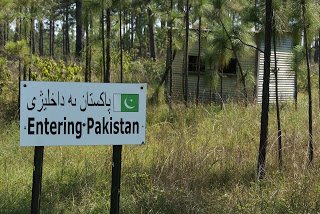
Introduction:
Pakistan, officially Islamic Republic of Pakistan located in South Asia. In area, it is the 33rd largest country covering 881,913 square kilometers.Pakistan got independent on 14 of August 1947 , earlier Muslims were living with Indians in Indo-Pak. Quaid-e-Azam was the founder of Pakistan. Pakistan got divided into 2 Parts, one was west Pakistan (Bangladesh) and the other was east part called Pakistan.
The Government system is Federal Parliamentary republic. Geographically, Pakistan has very important place on the map of the world. Pakistan share its border with India, Iran, Afghanistan, China and Arand LifeStyle of Peopleabian Sea. In the east, it has border with India. In the west, Pakistan has border with Iran and Afghanistan. In the north, it has border with China and in the south, it's border touches the Arabian Sea. Pakistan has a good relation with his neighbor countries except India. The official languages of Pakistan is Urdu(National) and English. National Fruit of Pakistan is Mango.The largest city of Pakistan is Karachi. The country code of Pakistan is +92.
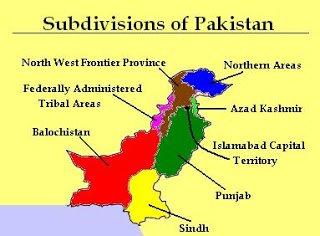
States of Pakistan:
Punjab, Balochistan , NWFP(Khyber Pakhtunkhwa) and Sindh are the four states of Pakistan. Recently NWFP has been renamed as Khyber Pakhtunkhwa. Each state has its own importance and beauty. Pakistan is full of natural things and natural beauty. National Animal of Pakistan is Markhor.
Only within 60 years, since Pakistan came into existence, its the center of attention of all the world. Its name is being destroyed by its enemies with bad propaganda, it is the best, Every picture has two sides, or we can see anything with both negative and positive visions, if we will look Pakistan with positive vision, it is blessed by God, but if we will see it with a negative vision, we can find bad people who are damaging its name, but see how much God has blessed it. You tell me should we adopt positive vision or negative vision while judging anything, only its enemies will look for negative traits that are few. Pakistan is the best.
.jpg)
Family Life:
Social relations among Pakistanis are very much influenced by caste (inherited social status and job categories). (Islam, rejects the caste system.) The caste system does not have the religious aspects of the true Hindu caste system of India, but it does define the job roles of specific groups in the villages. It is also important for selecting a marriage partner.
Pakistanis follow the general customs of Islam in marriage (nikah), but details vary according to community and region. Parents take great care in arranging marriages for their children. Pakistani society is patriotically (the daughter-in-law enters the household of her husband's family). The role of women in traditional Pakistani society is clearly defined: to bear sons, to manage the household, and to see to the needs of the men of the family. However, behind the scenes, women have influence in family matters.
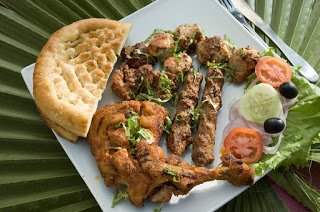
Food:
It is difficult to identify food that is specifically Pakistani because the region shares food traditions with its neighbor, India. The main difference between Pakistani and Indian food is that Pakistani food tends to be less spicy. Pakistani dishes are often made with yogurt, which reduces the effect of the hot spices used in cooking.
Wheat is the staple food for most of the people. It is eaten in the form of flat, unleavened bread called chapatis or roti, together with spiced lentils (dal) and vegetables in season. Sweetened tea, buttermilk, or lassi, a drink made from yogurt, rounds out the meal. Those who can afford to buy it eat meat or poultry, although in rural areas these are usually festival foods. Goat meat is a favorite. Pakistanis will not eat pork, because Muslims regard it as unclean.
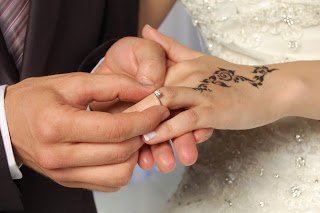
Relationships:
Traditional Pakistanis use the formal greeting of Muslims the world over, Salaam alaikum (Peace be with you). The correct reply to this is the sentence, Wa alaikum as Salaam (And also unto you). Less formally, men shake hands and friends embrace each other. Pathans embrace twice, once from the left side and once from the right. Men are addressed as Sahib ("Mister" or "Sir"); when used with a name, the word Sahib comes last (as in "Johnson Sahib "). The equivalent form of address for a woman is Begum . Khan, although a name, is also a title of respect.
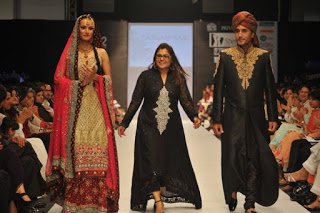
Clothing:
The standard clothing of men all over Pakistan is the shalwar, loose baggy trousers, and kurta, a long shirtlike tunic. This is worn with a variety of head coverings, from turbans to caps. On formal occasions, the kurta is replaced by an achkan or serwani , a long coat that buttons up to the neck.
The Jinnah cap, favored by Muslim Indian politician M. A. Jinnah (1876–1948), is popular among politicians, government officials, and other groups in the cities and towns of Pakistan.
Women commonly wear the shalwar , kamiz , and dupatta (scarf), or the sari. Orthodox Muslim women cover themselves from head to foot in the tent-like burqa, the long garment that covers them from head to toe.
.jpg)
Rites of Passage:
Pakistanis follow the rites of passage associated with the Islamic faith. Newborns are sanctified by prayer and undergo head-shaving and naming ceremonies. All males undergo the ritual of circumcision (sunnat) . Among some Muslims, a ceremony known as Bismillah marks the beginning of a child's education in religious matters.
Ceremonies associated with death and burial combine practices from the shari'ah, (Islamic law), with local customs and traditions. The body is ritually bathed and wrapped in a white shroud in preparation for burial. The body is brought out of the house, and the face of the deceased person is shown to relatives and neighbors. Mourners, led by a priest, say prayers over the body, which is then taken in procession to the graveyard.
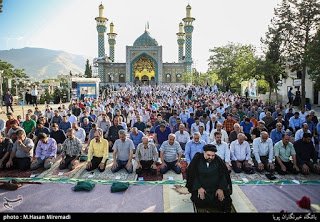
Major Holidays:
The two great religious festivals celebrated by the Pakistanis are Eid-al-Fitr , celebrating the end of the fast of Ramadan , and Bakr-Eid, the feast of sacrifice. Ramadan, the month of fasting, is observed by all Muslims. Muharram is a major day of remembrance among the Shi'ahs. The Urs festivals, commemorating dates of the deaths of Sufi saints, are important festivals celebrated at the saints' shrines. (Sufis are members of another of the Muslim sects.) The Muslim religious holidays follow the lunar calendar, so they fall on different days on the Western calendar each year.
In addition to religious holidays, Pakistanis observe certain national holidays. These include Independence Day (August 14), Pakistan Day (March 23), Defence of Pakistan Day (September 6), and the birth-date and deathdate of M. A. Jinnah, the Quaid-e-Azam (December 25 and September 11, respectively).
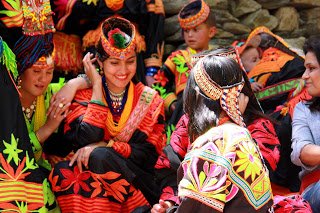
Cultural Heritage:
Buddhism has left its mark on Pakistan. The ancient kingdom of Gandhara, in northern Pakistan, was a major center of Buddhist learning and arts from the first to fifth centuries AD . With influences from the West, Buddhists developed a tradition of Gandhara art that combined motifs from Persia, Greece, and Rome with Buddhist forms. The Indian-Islamic style of architecture, the many shrines of the pirs (Sufi saints), and the mosques such as the Badshahi Mosque in Lahore indicate the influence of Islam.
The poetry and music of the Sufis are widely known. The singing of qawwalis, religious songs, is extremely popular, and some qawwali singers enjoy the kind of fame pop stars have in the West. There is a rich tradition of poetry in Urdu and other regional languages.
.jpg)
Language:
Over twenty languages are spoken in Pakistan. Punjabi is spoken by almost 60 percent of the population. Other languages include Sindhi (13 percent); Pushto or Pashtu, the language of the Pathans (8 percent); and Baluchi (2 percent). Kashmiri is the language of the disputed areas of the former Jammu and Kashmir State.National Language of Pakistan is Urdu.Only about 10 percent of the population speaks Urdu.
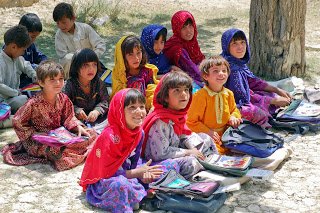
Education:
Despite the expansion of educational facilities since independence, only 40 percent of Pakistanis over fifteen years of age were literate (could read and write) as of 1997. The variation in literacy between city and rural populations is also great. Attendance at school remains low in rural areas because many children must work in the fields, and the dropout rate is high. Over two-thirds of adults have no formal schooling. Less than ten percent of the population attends universities.
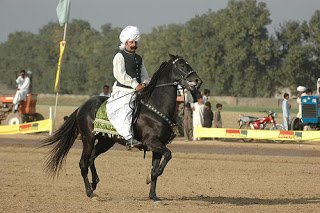
Sports:
Sports and games enjoyed by children in rural areas include hide-and-seek, marbles, kite flying, gulli-danda (a stick game played by boys), and kabaddi, a wrestling game. For men, cockfighting, partridge fighting, and pigeon flying (and betting on the outcome) are favorite pastimes. Polo, played more informally than in the West, is popular in northern areas.
Pakistanis also play modern sports. The entire country is addicted to cricket, a leftover from British colonial days. In recent years, the Pakistani national (Test) cricket team has regularly defeated England's team. The Pakistani national field hockey team is also one of the best in the world, a frequent winner of the Olympic gold medal. Games such as soccer, tennis, badminton, and table tennis are also played. Pakistanis have regularly won the world championship in squash, a court game similar to racquetball.
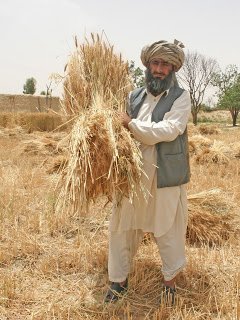
Employment:
Pakistan is mainly an agricultural nation, with 68 percent of its people living in rural areas. Pakistan's rapid population growth has increased the demand for food and slowed industrial expansion. There is a surplus of laborers. This has given rise to unique businesses, such as the world's largest ship-breaking operation. It is located on the beaches of the Arabian Sea coast, and the sometimes dangerous work of tearing apart old boats and ships is done almost entirely by hand. Many Pakistanis work in the oil-exporting countries of the Middle East, where workers are in demand. They earn much higher incomes than they could in Pakistan. This is an important source of foreign currency (money) for the country.Ten qualities of Pakistan:
1.Pakistan has four seasons including Summer, Winter, Autumn and Spring.
2.It has land of all kinds including forms, Plains, Desert, Mountains, Hill,
Forests, area of glaciers and area of extreme hot temperature.
3.Pakistan is blessed with Minerals.
4.Pakistan produces best Mangoes, Rice , Oranges and Dry Fruits.
5.Pakistani people are beautiful at heart and they enjoy a balance completion.
6.Pakistan enjoys five rivers and they fertile the rich land of Pakistan.
7.Pakistan has rich culture and tradition.
8.Pakistani people are very intelligent and sincere, they are always willing to help others.
9.Pakistan enjoys its border with Arabian Sea, the sea of warm water.
10.Pakistanis are considered as Happiest people in World.No matter how they are living
and what they have, they are always happy and satisfied.
Good to know about culture and past. You presented it very well friend.
Can you resteem it to your profile.
Upvote this blog post https://steemit.com/christianity/@bible.com/verse-of-the-day-hebrews-4-16-nlt